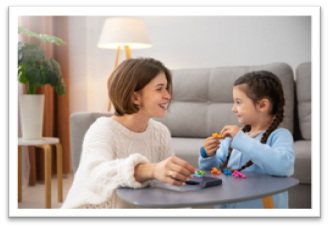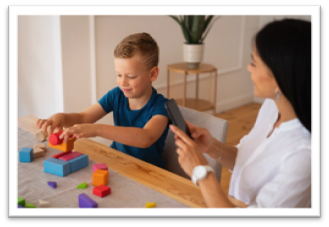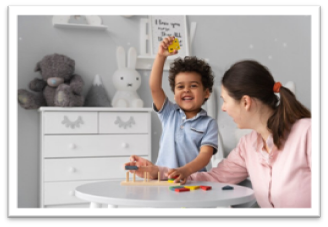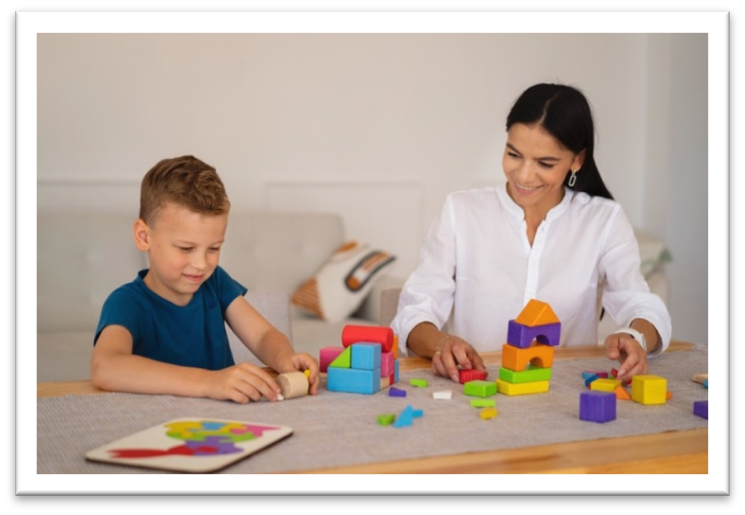Why Is The Therapist Just Playing “Games” With My Child?

Have you’ve ever peeked into your child’s therapy session and thought,
“All they’re doing is playing games!”
You’re not alone – and you’re not wrong to wonder.
As a Therapist, I hear this concern from many loving, concerned parents.

“Why is the therapist only playing games with my child? Shouldn’t they be talking about their feelings or working on problems?”
This concern is completely valid, especially when you’ve invested time, trust, and money into therapy. But what may look like “just play” is often carefully structured, evidence-based psychological intervention tailored to the developmental needs of your child.
Let’s unpack what’s really happening in the therapy room.
Children Communicate Through Play
Young children often don’t have the words to explain what’s going on inside. They may not say, “I’m anxious about school,” or “I’m sad because Dad moved out.” Instead, they act it out through toys, games, and stories.
According to Psychologist Jean Piaget, in early childhood, play is how kids make sense of the world. So, when your child picks a game or starts pretending, they’re giving us a peek into their inner world. For example, a child who has experienced family conflict might consistently stage fights between dolls or act out separation themes during games. These are not just random actions; they are symbolic representations of their emotional life.
What Is Play Therapy?
Play therapy is a well-established therapeutic approach used by therapists to help children express emotions, work through challenges, and build healthier behaviour.
In play therapy, the therapist uses games, toys, stories, and creative expression to access the child’s inner world. This allows them to:

- Build trust and rapport
- Observe patterns of behaviour
- Explore themes of fear, loss, anxiety, or trauma
- Model and reinforce coping skills
There are two styles of Play Therapy:
- Non-directive play therapy: The child leads. The therapist follows and watches for emotional or behavioural themes (e.g., repeated themes of fear, control, or loss).
- Directive play therapy: The therapist guides the session with games and activities designed to teach specific skills (like handling frustration or solving problems).
Games are not chosen at random – they are carefully selected to match therapeutic goals, such as improving impulse control, increasing frustration tolerance, or practicing social skills.
How Games Serve Therapeutic Goals
Let’s look at a few examples:
Here’s what looks like a game – and what it’s really doing:
| Game or Activity | What It Builds |
| Uno, Jenga | Frustration tolerance, turn-taking, impulse control |
| Emotion cards or puppets | Naming and understanding feelings |
| Pretend play (dolls, action figures) | Expressing fears or recreating real-life events |
| Drawing/Art activities | Exploring thoughts nonverbally |
| Cooperative board games | Social skills, flexibility, teamwork |
In therapy, your child might say, “Let’s pretend this stuffed animal got left behind.” That could be how they’re processing something important like grief, divorce, or rejection. The therapist tracks these cues and supports healing through gentle guidance.
How You Can Support the Process
- Be Curious: Ask the therapist about the rationale behind activities. Most are happy to explain.
- Trust the Process: Change in children is often subtle and takes time. Progress may not look like traditional talk therapy.
- Ask for Progress Updates: Regular parent-therapist check-ins (without the child present) are a key part of therapy.
- Support Play at Home: Play-based interactions can strengthen your bond with your child and reinforce therapy gains.

So, when you see your child “just playing” in therapy, remember:
“Play is their language. Toys are their words”
Behind every game, the therapist is tracking your child’s emotional cues, modelling healthy behaviours, and gently guiding them toward healing. It’s not just play, its “therapeutic play”.
Children don’t say, “I’m hurting.” They show it, and play is their way of telling the story.
References
- Association for Play Therapy. (n.d.). What is Play Therapy? Retrieved from https://www.a4pt.org
- Knell, S. M. (1993). Cognitive-behavioural play therapy. Northvale, NJ: Jason Aronson.
- Landreth, G. L. (2012). Play Therapy: The Art of the Relationship (3rd ed.). Routledge.
- Piaget, J. (1962). Play, dreams and imitation in childhood. New York: W.W. Norton & Company.
Written By – Ankita Mishra , Provisional Psychologist
Images by: FREEP!K
If you’d like to find out more about One Central Health, give us a call today on (08) 9344 1318.
